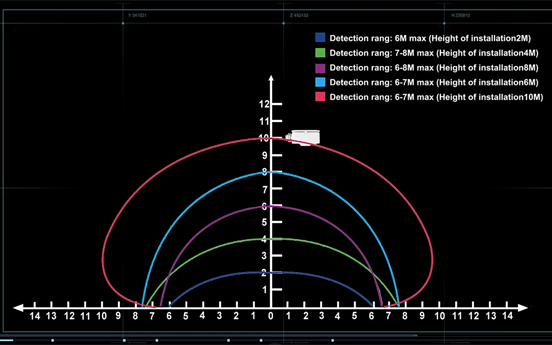Precautions for installation and use of microwave sensor
However, when users install and use microwave inductor, they are not familiar with the characteristics of microwave inductor and have a lot of doubts. Today, let's talk about the precautions for installing/using microwave sensors:
1. Professional installers are needed
First of all, microwave inductor is a professional product, which needs to be installed by professional electricians, because wiring, dip switch setting, etc., requires certain electrician knowledge.
2.Can not penetrate metal materials
Microwave inductors can penetrate non-metallic materials, such as plastic, glass, wood, gypsum board, etc., and can be installed inside the lamp without affecting the overall design and installation of the lamp, which is the advantage of microwave inductors. However, at the same time, the microwave can also penetrate non-concrete walls such as drywall and glass wall, and the movement signal outside the wall can also trigger the microwave sensor to work, which brings trouble to some users. If it is a standard concrete wall, the energy of microwave radiation will be consumed in the wall, and cannot penetrate.
Microwave cannot penetrate metal, but we often see customers install microwave sensors behind the aluminum substrate of the lamp board, so the sensor will not work. The antenna part of the sensor must be exposed to work normally.
3. Induction distance is related to a variety of factors
In addition to the size of the detected object, the factors affecting the sensing distance also include moving speed, installation height and installation environment (whether there are multiple reflectors). For example, the sensing distance in the corridor environment is longer than that in the open environment. Adults will test farther than children and so on.
4. Debugging is required according to the application environment
Due to the diversity of application environments of microwave sensors, it is impossible for manufacturers to imitate each application environment for verification testing. Therefore, when installing microwave sensors in different occasions, it may be necessary to readjust parameters (such as sensing distance, constant state, low light time, light sensing threshold, etc.) to make the sensors match the environment.
For example, in narrow space or large area metal environment, we need to set low induction mode, or reduce the induction distance to make the product work stably.
5. Set the correct light sensitivity value
The combination of motion sensing and light control can make the sensor smarter and more energy efficient. Due to different time, different weather, different season and different environment, the proportion of various spectra in natural light is not the same, resulting in different illuminance values of photosensitive detection. In order to solve this problem, it is recommended to install the sensor in the environment of diffuse light reflection, avoid direct sunlight.
There is also a point, affected by the transmittance of the lampshade, natural light through the lampshade will be reduced, resulting in the actual value of the light sensor received and the light outside the lampshade is different, and the transmittance of different lampshades is not the same, so the user also needs to adjust the light control value for the installation environment.
6. Dimming function, need to adapt to adjust the drive
For the dimming function sensor, it is necessary to adjust the optical drive. Because the dimming curve and dimming accuracy of different drives are different, the dimming effect of sensors adapted to different types of drives will be slightly different. For example, the minimum brightness of some can be adjusted to 10%, and some can only be adjusted to 20%, which is determined by the drive.
7. Outdoor applications may be triggered by mistake
The principle of microwave sensor is to detect moving objects. There are fans, DC motors, sewer pipes, air outlets, vibration and other mobile signals around the sensor, and the sensor may be triggered. Therefore, at present, the microwave sensor is used outdoors. But at night, the light sensitivity allows you to detect movement signals and turn on the lighting, and the sensors will be triggered by high winds, heavy rain, and swaying trees around, so if you're using the sensors outdoors, please be aware of that.











